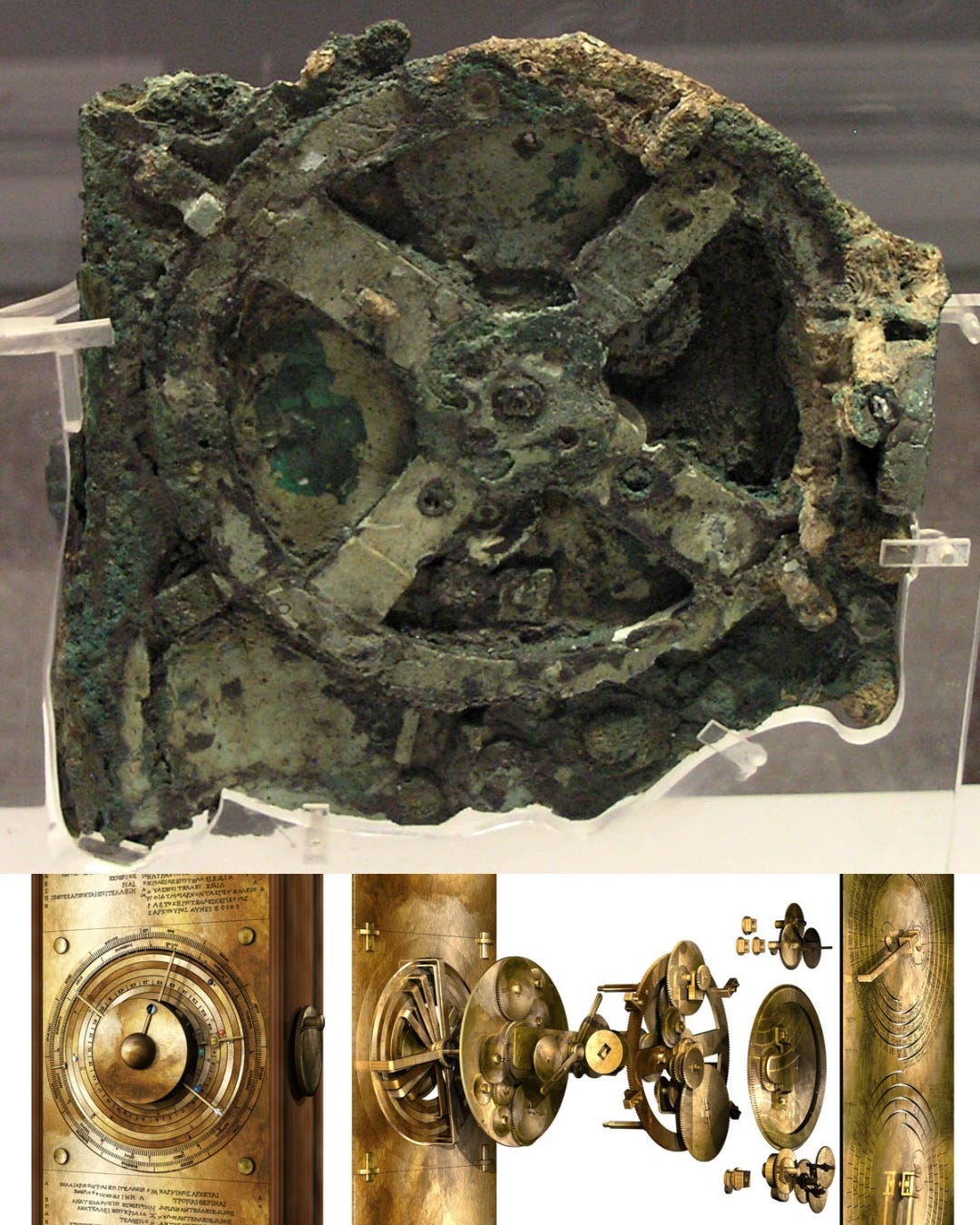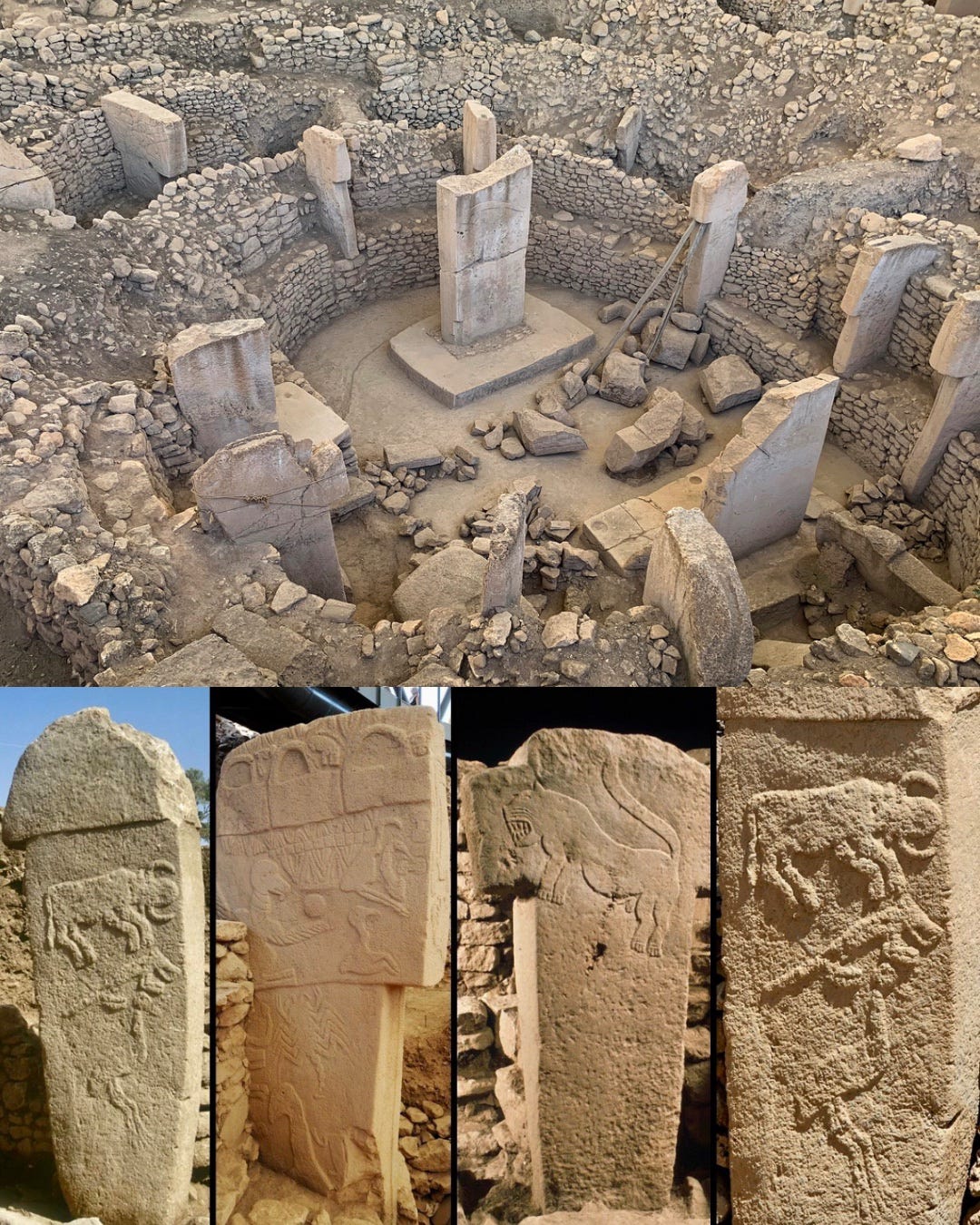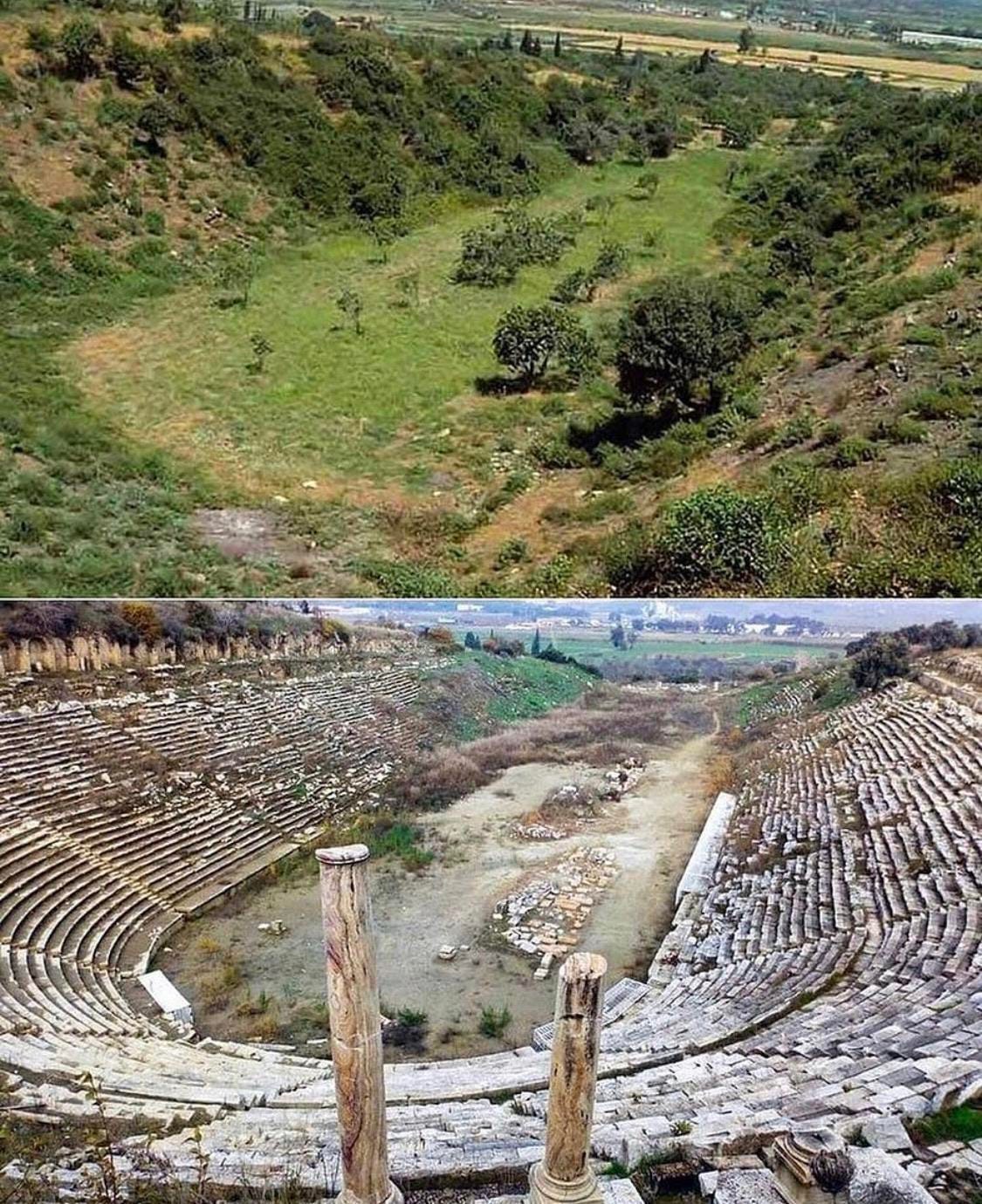In his poem Little Gidding, T. S. Eliot wrote:
We shall not cease from exploration
And the end of all our exploring
Will be to arrive where we started
And know the place for the first time.
I’ve always loved these verses because they remind me that familiarity can be deceiving.
What we think we know may change when we look a little deeper… and suddenly, the world feels brand new again.
This is the paradox of archaeology — its revelations come not only from what is buried, but from how we learn to see. Every new discovery redefines our knowledge and proves we’re not the first to stand in awe, to long for more, to gaze into the unknown and ask: “What lies beyond?”
Reminder: This is a reader-funded publication focused on spreading beauty, and it depends on your support to keep going.
Upgrade your subscription for just a few dollars a month to help our mission and access members-only articles 👇🏻
The oldest known cave painting is a red hand stencil in Maltravieso Cave, Cáceres, Spain, dated to over 64,000 years ago using the uranium-thorium method and believed to have been made by a Neanderthal.
But one of my favorites is Cueva de las Manos — the Cave of the Hands — in Santa Cruz, Argentina.
This artwork was created over thousands of years, between 7,300 BC and 700 AD, during the Archaic period of pre-Columbian South America. The handprints, left by people generations apart, stretch across centuries, even millennia...
Their individual lives are lost to time, but their presence remains in these powerful stencils. It’s a deeply human instinct: the desire to leave a mark, to be remembered.
A quiet way of saying, “I was here.”
There’s something timeless in this urge to reach beyond the moment and speak to the future through art. Russian novelist and historian Aleksandr Solzhenitsyn captured this beautifully in his 1970 Nobel lecture:
Archeologists have not discovered stages of human existence so early that they were without art. Right back in the early morning twilights of mankind we received it from Hands which we were too slow to discern. And we were too slow to ask: FOR WHAT PURPOSE have we been given this gift? What are we to do with it? ...It is we who shall die — art will remain.
History Keeps Changing
We like to think we’re at the peak of understanding… but in reality, we’re always latecomers.
For instance, the discovery of Göbekli Tepe in Turkey, a massive stone temple that predates Stonehenge by 6,000 years, flipped the traditional story of civilization on its head. This ancient site features towering T-shaped pillars decorated with intricate carvings and even hints of ancient astronomy. It revealed that complex religious and social structures existed way earlier than we ever imagined.
Equally revolutionary, but in the field of paleontology, are the fossils unearthed at Jebel Irhoud in Morocco, dated to about 315,000 years ago, which pushed the origin of Homo sapiens back by over 100,000 years, showing that our species evolved far earlier than we previously thought.
The human story is far from complete, and future findings — perhaps hidden deep within the impenetrable Amazon rainforest or beneath the sands of the Sahara — could once again overturn everything we think we know about our origins and unlock lost chapters of our forgotten past.
Some of the surreal discoveries you're about to see challenge more than the unknown… they unsettle what we thought was settled. And maybe that’s the point. The past doesn’t sit still. The more we uncover, the more it demands that we reorient our sense of where we come from — and, in turn, where we’re going…
1. The Oldest Analogue Computer
Recovered in 1901 among the remains of a 2,000-year-old shipwreck off the coast of Greece, the Antikythera mechanism is an ancient mechanical model of the Solar System. It is widely regarded as the oldest known example of an analogue computer.
Designed to predict astronomical positions and eclipses decades in advance, the mechanism has long puzzled researchers. Its remarkable complexity disappeared from the historical record for over a thousand years, with no comparable technology reappearing until the 14th century in Western Europe.
2. Göbekli Tepe
Inhabited from around 9500 BC to at least 8000 BC, Göbekli Tepe has dramatically reshaped our understanding of early civilization. It was once believed that humans were purely nomadic hunter-gatherers before the rise of agriculture. But Göbekli Tepe shows that even at this early stage, people were already building monumental structures with religious significance.
Located in southeastern Turkey, the site was first identified in a 1963 survey but wasn’t properly excavated until the 1990s, when German archaeologist Klaus Schmidt recognized its significance. Since then, excavations have revealed massive T-shaped stone pillars arranged in circular enclosures: these are some of the oldest known megaliths in the world and among the earliest examples of monumental architecture created by humans.
So far, less than 10% has been excavated. I’ll be writing a full piece on this remarkable site in the near future, because it definitely deserves a much deeper dive.
3. The Roman Mosaic That Thrilled London
While this discovery may not radically change our understanding of human history, it is undeniably a surreal sight to behold. In 2022, archaeologists excavating a site on Southwark Street, close to the Shard, uncovered the largest Roman mosaic found in London in over fifty years.
Antonietta Lerz, a supervisor for the Museum of London Archaeology, described the discovery as “a once-in-a-lifetime find in London.” She added, “It has been a privilege to work on such a large site where the Roman archaeology is largely undisturbed by later activity. When the first flashes of color started to emerge through the soil everyone on site was very excited."
4. The Ancient Greek Stadium of Magnesia
Sometimes, the most incredible history is hiding right under our feet…
The before-and-after shots of the Ancient Greek Stadium of Magnesia on the Maeander, in what is now Turkey, are absolutely stunning. At 185.9 meters long, this is the most well-preserved stadium in the entire Anatolian region.
5. The Ozymandias Colossus
Ramses II commissioned more colossal statues of himself than any other pharaoh in ancient Egypt.
The most imposing and enigmatic among them is the Ozymandias colossus. When standing, it soared nearly 20 meters (62 feet) high and weighed around 1,000 tons — making it one of the largest monolithic sculptures ever created.
The feat of moving a 1,000-ton stone in ancient times is truly astonishing, even when compared to today’s standards. For instance, in 2012, the Los Angeles County Museum of Art (LACMA) spent close to $10 million just to relocate a comparatively modest 340-ton boulder for a public art exhibit.
The foundation of modern Egyptology dates back to 1798, when Napoleon’s expedition brought scientists who identified key ancient sites such as the Ramesseum. In 1815, Italian adventurer Giovanni Belzoni unearthed the massive granite head of Ramesses II, known as the “Younger Memnon,” and transported it to London. The excitement surrounding the statue’s arrival, along with stories about the colossus at the Ramesseum, inspired poet Percy Bysshe Shelley to compose one of his greatest masterpieces...
Around 60 B.C., the historian Diodorus of Sicily reportedly translated the hieroglyphic inscription on the statue’s base: “King of Kings am I, Ozymandias.” (Ozymandias is the Greek rendition of Ramesses II’s throne name, User-Maat-Re.) The inscription continues: “If anyone would know how great I am… let him surpass one of my works.”
Shelley’s iconic sonnet draws from this message, contemplating the relentless passage of time, the inevitable decline of human achievements, and the timeless human desire for immortality:
I met a traveller from an antique land
Who said: Two vast and trunkless legs of stone
Stand in the desart. Near them, on the sand,
Half sunk, a shattered visage lies, whose frown,
And wrinkled lip, and sneer of cold command,
Tell that its sculptor well those passions read
Which yet survive, stamped on these lifeless things,
The hand that mocked them and the heart that fed:
And on the pedestal these words appear:
"My name is Ozymandias, King of Kings:
Look on my works, ye Mighty, and despair!"
No thing beside remains. Round the decay
Of that colossal wreck, boundless and bare
The lone and level sands stretch far away.
Thanks for reading! A quick reminder: this newsletter runs entirely on reader support. There are no ads, just a passion for sharing beauty. If you enjoy the content, consider contributing a few dollars a month. Your support makes a huge difference — and as a bonus, you'll get access to exclusive articles and the full archive. Thank you!









A great read, thank you James.
I’m following all things Göbekli Tepe related as I love that there is tangible proof that the nomadic narrative has been proved wrong. Though I am disappointed to read that the Turkish government have apparently forbade all further excavation at the site or the surrounding area as they’re keen to monetise the area first?
Very reminiscent of the Egyptian position to forbid further work(especially ground penetrating radar) for fear that discoveries will undermine the ‘official’ chronology of the Egyptian dynasties.
Though that ship may have sailed after the scan findings beneath the Khafre pyramid!
Thank you James. Your article left me full of wonder.